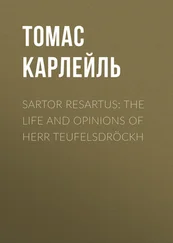Vladimir Nabokov - Strong opinions
Здесь есть возможность читать онлайн «Vladimir Nabokov - Strong opinions» весь текст электронной книги совершенно бесплатно (целиком полную версию без сокращений). В некоторых случаях можно слушать аудио, скачать через торрент в формате fb2 и присутствует краткое содержание. Город: New York, Год выпуска: 1990, Издательство: First Vintage International Edition, Жанр: Классическая проза, на английском языке. Описание произведения, (предисловие) а так же отзывы посетителей доступны на портале библиотеки ЛибКат.
- Название:Strong opinions
- Автор:
- Издательство:First Vintage International Edition
- Жанр:
- Год:1990
- Город:New York
- ISBN:нет данных
- Рейтинг книги:4 / 5. Голосов: 1
-
Избранное:Добавить в избранное
- Отзывы:
-
Ваша оценка:
- 80
- 1
- 2
- 3
- 4
- 5
Strong opinions: краткое содержание, описание и аннотация
Предлагаем к чтению аннотацию, описание, краткое содержание или предисловие (зависит от того, что написал сам автор книги «Strong opinions»). Если вы не нашли необходимую информацию о книге — напишите в комментариях, мы постараемся отыскать её.
Strong opinions — читать онлайн бесплатно полную книгу (весь текст) целиком
Ниже представлен текст книги, разбитый по страницам. Система сохранения места последней прочитанной страницы, позволяет с удобством читать онлайн бесплатно книгу «Strong opinions», без необходимости каждый раз заново искать на чём Вы остановились. Поставьте закладку, и сможете в любой момент перейти на страницу, на которой закончили чтение.
Интервал:
Закладка:
Examples are the stained-glass windows of knowledge. From a small number of A-plus stories I have chosen half-a-dozen particular favorites of mine. I list their titles below and parenthesize briefly the passage — or one of the passages — in which genuine afflation appears to be present, no matter how trivial the inspired detail may look to a dull criticule.
John Cheever's «The Country Husband» («Jupiter [a black retriever] crashed through the tomato vines with the remains of a felt hat in his mouth». The story is really a miniature novel beautifully traced, so that the impression of there being a little too many things happening in it is completely redeemed by the satisfying coherence of its thematic interlacings.)
John Updike's «The Happiest I've Been» («The important thing, rather than the subject, was the conversation itself, the quick agreements, the slow nods, the weave of different memories; it was like one of these Panama baskets shaped underwater around a worthless stone». I like so many of Updike's stories that it was difficult to choose one for demonstration and even more difficult to settle upon its most inspired bit.)
J. D. Salinger's «A Perfect Day for Bananafish» («Stopping only to sink a foot in a soggy, collapsed castle ..». This is a great story, too famous and fragile to be measured here by a casual conchometrist.)
Herbert Gold's «Death in Miami Beach» («Finally we die, opposable thumbs and all». Or to do even better justice to this admirable piece: «Barbados turtles as large as children . . . crucified like thieves . . . the tough leather of their skin does not disguise their present helplessness and pain». )
John Barth's «Lost in the Funhouse» («What is the story's point? Ambrose is ill. He perspires in the dark passages; candied apples-on-a-stick, delicious-looking, disappointing to eat. Funhouses need men's and ladies' rooms at interval». I had some trouble in pinning down what I needed amidst the lovely swift speckled imagery.)
Delmore Schwartz's «In Dreams Begin Responsibilities» («. . . and the fatal merciless passionate ocean». Althongh there are several other divine vibrations in this story that so miraculously blends an old cinema film with a personal past, the quoted phrase wins its citation for power and impeccable rhythm.)
I must add that I would he very pleased if a Professor of Literature to test his students at the start or the close of the term would request them to write a paper discussing the following points:
1. What is so good about those six stones? (Refrain from referring to «commitment», «ecology», «realism», «symbols», and so forth).
2. What other passages in them bear the mark of inspiration?
3. How exactly was that poor lap dog made to howl in those lacecuffed hands, close to that periwig?
LEPIDOPTERA PAPERS
For nearly fifteen years after moving, in 1940, to America I devoted a tremendous amount of time (more in fact than I did to writing and teaching) to the study of lepidoptera, a study consisting of three parts: working out certain microscopic structures in the laboratory of the Museum of Comparative Zoology, Harvard; contributing scientific papers to entomological journals; and collecting during summer vacations. At least three of those papers have sufficient literary interest to deserve a place in this volume and to them I have added two book reviews, the last one published quite recently.
THE FEMALE OF LYCAEIDES SUBLIVENS NAB.*
Last summer (1951) I decided to visit Telluride, San Miguel County, Colorado, in order to search for the unknown female of what I had described as Lycaeides argyrognomon sublivens in 1949 (Bull. Mus. Comp. Zool., vol. 101: p. 513) on the strength of nine males in the Museum of Comparative Zoology, Harvard, which had been taken in the vicinity of Telluride half a century ago. L. sublivens is an isolated southern representative (the only known one south of northwestern Wyoming, southeast of Idaho, and east of California) of the species (the holarctic argyrognomon Bergstr. = idas auct.) to which anna Edw., scudderi Edw., aster Edw., and six other nearctic subspecies belong. I bungled my family's vacation but got what I wanted.
* Now known as Plebejus (Lycaeides) idas sublivens or Lycaeides sublivens Nab.; it has been dubbed «Nabokov's Blue» by F. Martin Brown (1955).
Owing to rains and floods, especially noticeable in Kansas, most of the drive from New York State to Colorado was entomologically uneventful. When reached at last, Telluride turned out to be a damp, unfrequented, but very spectacular cul-de-sac (which a prodigious rainbow straddled every evening) at the end of two converging roads, one from Placerville, the other from Dolores, both atrocious. There is one motel, the optimistic and excellent Valley View Court where my wife and I stayed, at 9,000 feet altitude, from the 3rd to the 29th of July, walking up daily to at least 12,000 feet along various more or less steep trails in search of sublivens. Once or twice Mr. Homer Reid of Telluride took us up in his jeep. Every morning the sky would be of an impeccable blue at 6 a.m.when I set out. The first innocent cloudlet would scud across at 7:30 a.m. Bigger fellows with darker bellies would start tampering with the sun around 9 a.m., just as we emerged from the shadow of the cliffs and trees onto good hunting grounds. Everything would be cold and gloomy half an hour later. At around 10 a.m. there would come the daily electric storm, in several installments, accompanied by the most irritatingly close lightning I have ever encountered anywhere in the Rockies, not excepting Longs Peak, which is saying a good deal, and followed by cloudy and rainy weather through the rest of the day.
After 10 days of this, and despite diligent subsequent exploration, only one sparse colony of sublivens was found. On that one spot my wife found a freshly emerged male on the 15th. Three days later I had the pleasure of discovering the unusual looking female. Between the 15th and the 28th, a dozen hours of windy but passable collecting weather in all (not counting the hours and hours uselessly spent in mist and rain) yielded only 54 specimens, of which 16 were females. Had I been younger and weighed less, I might have perhaps got another 50, but hardly much more than that, and, possibly, the higher ridges I vainly investigated between 12,000 and 14,000 feet at the end of July, in the Magdalena-snowi-centaureae zone, might have produced subItvens later in the season.
The colony I found was restricted to one very steep slope reaching from about 10,500 to a ridge at 11,000 feet and towering over Tomboy Road between «Social Tunnel» and «Bullion Mine». The slope was densely covered with a fine growth of lupines in flower (Lupintis parviflorus Nuttall, which did not occur elsewhere along the trail) and green gentians (the tall turrets of which were assiduously patronized by the Broad-Tailed Hummingbird and the White-Striped Hawk-moth). This lupine, which in the mountains of Utah is the food-plant of an alpine race of L. melissa {annetta Edw.), proved to be also the host of L. sublivens. The larva pupates at its base, and in dull weather a few specimens of both sexes of the imago could be found settled on the lower leaves and stems, the livid tone of the butterflies' undersides nicely matching the tint of the plant.
The female of subiwensis of a curiously arctic appearance, completely different from the richly pigmented, regionally sympatric, locoweed and alfalfa-feeding L. melissa or from the melissaYike females of Wyoming and Idaho argyrognomon (idas) races, and somewhat resembling argyrognomon (idas) forms from northwestern Canada and Alaska (see for instance in the abovementioned work, p. 501 and plate 8, fig. 112). It also recalls a certain combination of characters that crops up in L. melissa annetta.
Читать дальшеИнтервал:
Закладка:
Похожие книги на «Strong opinions»
Представляем Вашему вниманию похожие книги на «Strong opinions» списком для выбора. Мы отобрали схожую по названию и смыслу литературу в надежде предоставить читателям больше вариантов отыскать новые, интересные, ещё непрочитанные произведения.
Обсуждение, отзывы о книге «Strong opinions» и просто собственные мнения читателей. Оставьте ваши комментарии, напишите, что Вы думаете о произведении, его смысле или главных героях. Укажите что конкретно понравилось, а что нет, и почему Вы так считаете.










